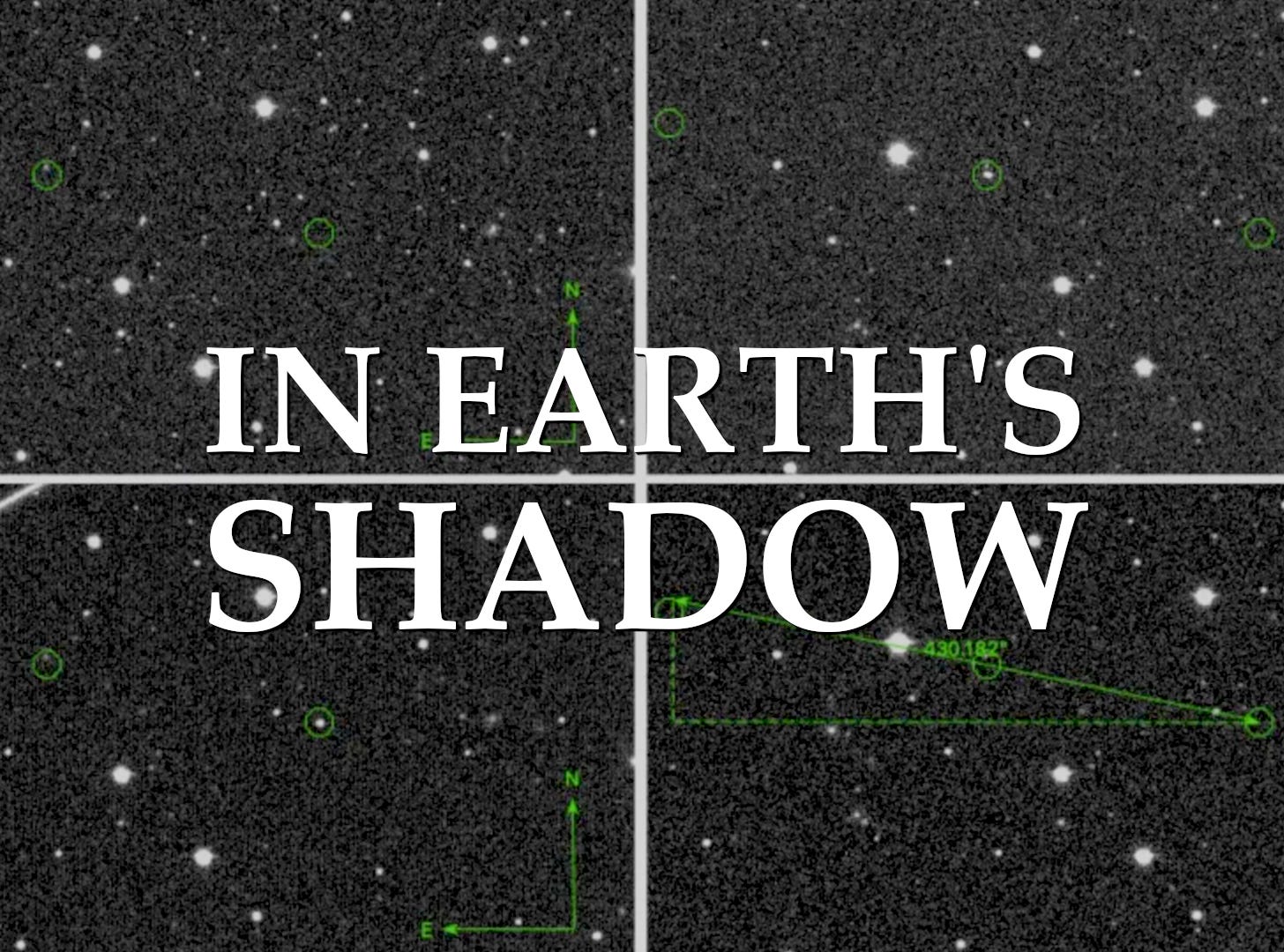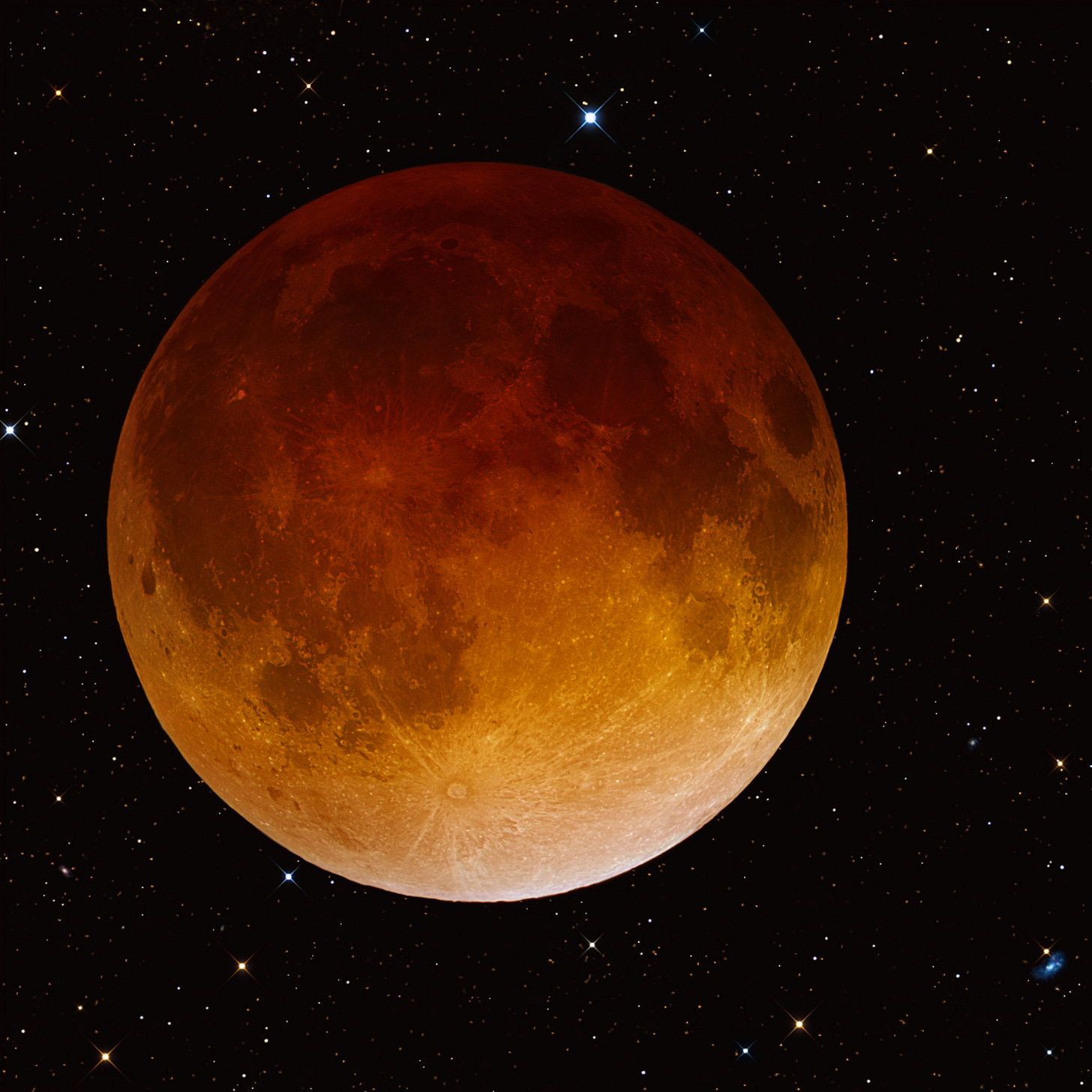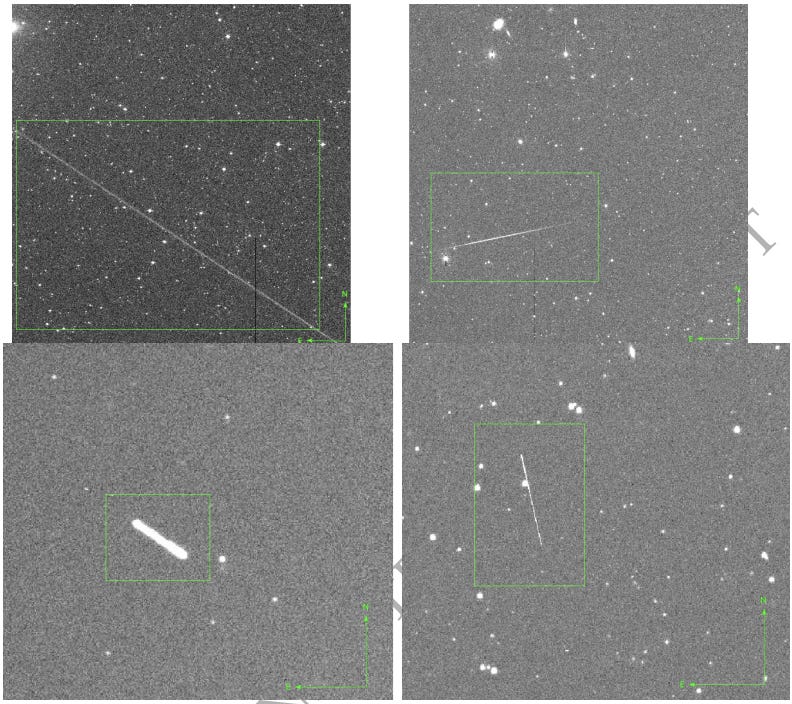In Earth's Shadow
A new method of detecting unidentified aerial phenomena (UAP) by looking for lights in Earth's shadow cone has been unveiled.

The hunt for unidentified anomalous phenomena continues. In a new peer-reviewed paper published by the Royal Astronomical Society, Dr Villarroel and her co-authors explain how the shadow of Earth in space would be an ideal place to search for advanced light-emitting objects.
This phenomenon is most famously seen during lunar eclipses, when the shadow cone is projected onto the surface of the Moon, obscuring the moonlight. However, Earth also casts a permanent shadow in space. Any light recorded in this environment could not originate from the reflection of sunlight on a reflective body. Instead, it would be a transient point source in deep space; some type of unknown high-atmosphere plasma that manages to remain stable without solar power; or an unregistered advanced platform, such as a spy satellite. While one might question the latter example, given that it would be counterproductive for spy satellites to emit light as this would reveal their position, satellite laser imagery is already being used in planetary science to monitor Earth.
The authors explain how they tested their method, here are some excerpts of their paper:
The Zwicky Transient Facility (ZTF; Bellm et al. 2019; Graham et al. 2019) is an untargeted wide-field transient survey observing transient events ranging from Solar System objects to powerful extragalactic events with the help of its systematic data acquisition system.
The analyses in this section concern three sample sets of ZTF images.
For sample A, we selected transient alerts from a public ZTF transient survey (courtesy of Igor Andreoni). The data set we searched spans from July 1, 2019, when real / bogus deep learning classification became available (Duev et al. 2019), until August 1, 2022. The data set excluded from the search those ZTF fields close to the Galactic plane to reduce contamination from M-dwarf stellar flares and other types of fast transients from astrophysical sources within the Milky Way. To achieve this, we ignored those fields with a Galactic extinction higher than E(B - V) = 0.3 mag at the central coordinates of the fields (using the Planck Collaboration (2014) dust maps) following Andreoni et al. (2020).
One-off transients are, in principle, only visible in a single image before vanishing. This limits us to transients that, when bright and detectable (brighter than ∼ 20.5 mag), persist for a shorter time than the sum of the exposure time and the time difference with subsequent or previous images (this adds up to ∼ 30 seconds, since the subsequent image is captured in immediate succession). Each alert included in the sample has at least 5 other alerts in the same image (i.e., same field, same JD) which were also detected only once during the ZTF survey, to focus on multiple transients. All sources within 1.5 arcseconds from a catalogued object were discarded. Also, all sources within 10 arcseconds from catalogued asteroids were removed. We obtained 11,029 transient alerts to examine closer.
Out of the sample of 11029 candidates, 262 (2.4%) of the examples are in the Earth’s shadow, which excludes any specular reflections for these particular cases.
This exercise permitted us to quickly identify a set of classes of note:
(1) images affected by a difference in depth (different magnitude limit) or other observational issues;
(2) two images showing how a short transient is first visible in one image, and then another transient is seen in a second, later image (in nearly all cases of this kind, the transient is first seen in the eastern part of the image, and later in the western, which suggests a moving object);
(3) images showing the synchronized movement of multiple objects moving from the east to west;
(4) events that have been, in a preliminary sense, identified as candidate multiple transients
Two cases of the latter category were deemed interesting:
The second candidate is a good example of an uncatalogued object that could be interesting if more information were available. Figure 4 shows a ∼17 magnitude object or objects that have no match when queried using the JPL Horizons database in April 2025.
This object (or set of objects) occurs within ∼0.07 arcseconds s −1 of the ecliptic, suggesting that it may be an asteroid. On the other hand, if this sequence represents multiple images of the same object, then its apparent motion in right ascension is about 6× times greater than of typical main belt asteroids, suggesting it is closer to the Earth.
Figure 4. Near-Earth object or triple transient? The object(s) of interest can be found within a 1000 arcsecond box centered at R.A. (J2000)= 145.2448564 and Dec.(J2000)= 15.6224391, J.D.= 2459256.8096296; see Table 2 for astrometric coordinates. A luminous object is seen streaking through the upper-left corner of the third image (lower left), possibly a meteor or aircraft. A fourth image in the g band with no object detected is added to the sequence (lower right), to show the deviation from a straight path.
We note that, with only 2 or 3 exposures of 30 seconds on each field every day, it is difficult or unlikely to find multiple transients if they happen over half an hour. We also note that the hypothetical case of a double transient might be indistinguishable from an asteroid if they appear in only two images, and might only be distinguished by the fact that asteroids move always from east to west.
For the present proof-of-concept study, we manually reviewed the detections to determine what kinds of objects do and do not appear in these samples, rather than produce an exhaustive catalogue of the results.
For example, in Figure 7 we present a few examples from B/IV of streaking objects. Streaks resembling these may belong to one of several categories:
(i) meteors;
(ii) high-altitude aircraft lights;
(iii) near-Earth asteroids located beyond the shadow cone; or
(iv) light-emitting objects above the atmosphere and moving within the shadow cone.
Figure 7. Examples of streaks found near the shadow center, from B/IV. The box sizes in the upper panels are (a) 46.3 × 31.9 arcmin, and (b) 25.2 arcmin × 16.6; in the lower panels: (c) 1.7 × 1.4 arcmin and (d) 2.6 × 3.8 arcmin. The first three images (a) through (c) are believed to be observations of real objects, while the fourth (d) is likely a cosmic ray due to the narrowness (FHWM of ∼1 arcsecond) and uniform width of the track in spite of brightness fluctuations. Given the 30 second exposure time and assuming that the objects are gravitationally bound to Earth, the object in (a) is moving at angular speeds consistent with orbits lower than < 14,000 km, while object (b) corresponds to ∼ 20,000 km altitude. Both objects are instead probably meteors (see text). (c) This uncatalogued object (not in MPC database as of April 2025) was 4.5◦ from the shadow center, and is probably an unknown heliocentric asteroid. If instead this were in a circular geocentric orbit, the streak length implies an altitude of almost 200,000 km, where the shadow radius is only about 2◦.
Of special note is an uncatalogued object or set of objects shown in Figure 4 and described in Table 3. Although the objects are located within a few degrees of the ecliptic, they do not appear in JPL’s list of small bodies in the Solar system or the Minor Planet Center catalog as of April 2025. Moreover, if either pair of three detections represent an asteroid, then it moves across the sky at about 4 arcseconds per minute, which is several times faster than a main belt asteroid at opposition. This leaves two possible interpretations. First, this case may be similar to the multiple clustered transient cases of unknown origin presented in (Villarroel et al. 2021; Solano et al. 2024). A second possibility is that these detections represent a single object in motion (e.g., a remote-controlled human spacecraft or asteroid). This is a good illustration of why triangulation is necessary to disambiguate events of this kind.
The automated survey of Samples B–C using NEOrion made possible the detection and study of many other interesting objects. We detected thousands of point sources of interest (as potential flashes), but also many streaks, which could form the focus of a follow-up study. The streaks shown in Figure 7 are within several degrees of the shadow center (Table 9). Streaks that cross the entire image, such as the one in the upper left of Figure 7, are probably meteors. The example shown in the upper right is contained entirely within a single image frame. The most likely explanation is a meteor striking the atmosphere at a steep angle. The FWHM of the cross-section is consistent with stellar psfs in the scene, suggesting an envelope of ionized gas measuring less than 0.5 m in diameter if located in the upper atmosphere. Alternatively, this could be a luminous object in Earth’s shadow orbiting at an elevation of approximately 20,000 km.
The methodological limitations of this study will be mitigated by the new ExoProbe project, see Villarroel & Marcy (2023). The project aims to build a network of telescopes with high-resolution Complementary Metal Oxide Semiconductor (CMOS) cameras to search for ET artifacts and probes in the inner Solar System, in search of short flashes (subsecond – second) associated with technological objects of potential extraterrestrial origin.
One of the main advantages of this study is that its method is extremely cost-effective. By using existing data, it identifies promising candidates that can be verified using direct imagery and custom-made tools. The search for exoprobes has only just begun.





